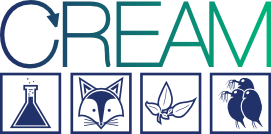Population-level effects of pesticide exposure at the small watershed level
Jacqueline Augusiak, PhD project, Wageningen University, The Netherlands
Current contact:Enable-Javascript@To-Read-E-mail-Address
A set of individual-based models is being developed to estimate the recovery of populations of various aquatic macroinvertebrates after pesticide exposure in dependence of different landscape scenarios. The major objective of this project will be to (1) evaluate whether important processes are described by the best, state of the art (sub)models, (2) to parameterize and validate the output of these (sub)models and (3) to develop protocols of experiments that can parameterize these (sub)models, thus enhancing their credibility. Special experimental attention will be given to those submodels that depict different parts of macroinvertebrate life-cycle, for which data is scarce, but are found to be very relevant for the recovery process.
In environmental risk assessment of e.g. pesticides, adverse effects of chemicals on populations of aquatic macroinvertebrates might be considered acceptable if full recovery occurs within a certain time frame.
The process of recovery can be divided into two types, allogenic and autogenic recovery. Allogenic recovery describes recovery by immigration of individuals from uncontaminated sites to the pesticide stressed site, where they initiate complete recovery through reproduction, once toxicant residues fall below the critical threshold concentration. Autogenic recovery is determined by intrinsic growth and insensitive resting stages at the pesticide exposed site, e.g. reproduction of surviving individuals. Both types of recovery strongly depend on a suite of ecological, physiological and landscape factors, describing e.g. density dependence, the life cycle, migration, competition and sensitivity to the chemical under investigation.
Population models typically deal with the dynamics of abundance or distribution of a single species and can be used to describe field-relevant responses using laboratory toxicity data and life-cycle characteristics. They can also be extended to the landscape level, where a group of several local populations that are linked by immigration and emigration accounts for the response dynamics to pesticide exposure.
The MASTEP (Metapopulation model for Assessing Spatial and Temporal Effects of Pesticides) model, an individual-based model, has been developed at Alterra (Van den Brink et al. 2007) and was used to estimate the combined allogenic and autogenic recovery of Asellus aquaticus, a water louse, and Chironomus riparius after a spray drift event of a theoretical insecticide in a ditch, pond and stream scenario. Both of these species are well represented in ecotoxicological studies and good quality data exist on most aspects of their life-history. However, their dispersal strategies and potential are still not that well understood as well as the density dependence of important factors like mortality and growth. Thus, within this project, understanding and quantifying the dispersal patterns and abilities for all species of interest will be the first interest and aim, followed by an investigation of the density dependence of parameters, which are of major importance for recovery.
Further reading:
Van den Brink, P.J., J. Verboom, J. M. Baveco and F. Heimbach. (2007). An individual-based approach to model spatial population dynamics of invertebrates in aquatic ecosystems after pesticide contamination. Environ. Toxicol. Chem. 26: 2226-2236.
Thorbek, P., V. Forbes, F. Heimbach, U. Hommen, H-H. Thulke, P.J. Van den Brink, J. Wogram and V. Grimm (eds.) (2010). Ecological models for regulatory risk assessments of pesticides: Developing a strategy for the future. Pensacola and Boca Raton (FL): Society of Environmental and Chemistry (SETAC) and CRC Press.
Galic, N., U. Hommen, J.M. Baveco and P.J. Van den Brink (2010). Potential application of population models in the European ecological risk assessment of chemicals: II review of models and whether they can address the protection aims. Integrated Environmental Assessment and Management. 6: 338-360.
Preuss, T.G., U. Hommen, A. Alix, R. Ashauer, P.J. Van den Brink, P. Chapman, V. Ducrot, V. Forbes, V. Grimm, D. Schäfer, F. Streissl and P. Thorbek. (2009). Mechanistic effect models for ecological risk assessment of chemicals (MEMoRisk) – a new SETAC-Europe Advisory Group. Environ. Sci. Pollut. Res. 16: 250 – 252.
Supervisor: Paul van den Brink (Wageningen University)
Co-supervisor: Volker Grimm (UFZ)
Associated partner:CTGB

